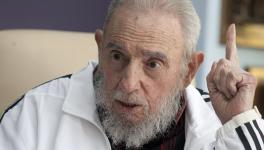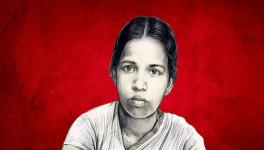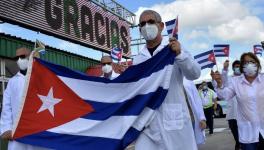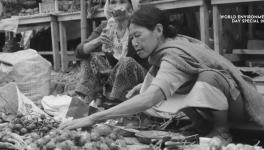Empresa Farmacéutica 8 de Marzo: How Cuba Marked International Women’s Day in 1981
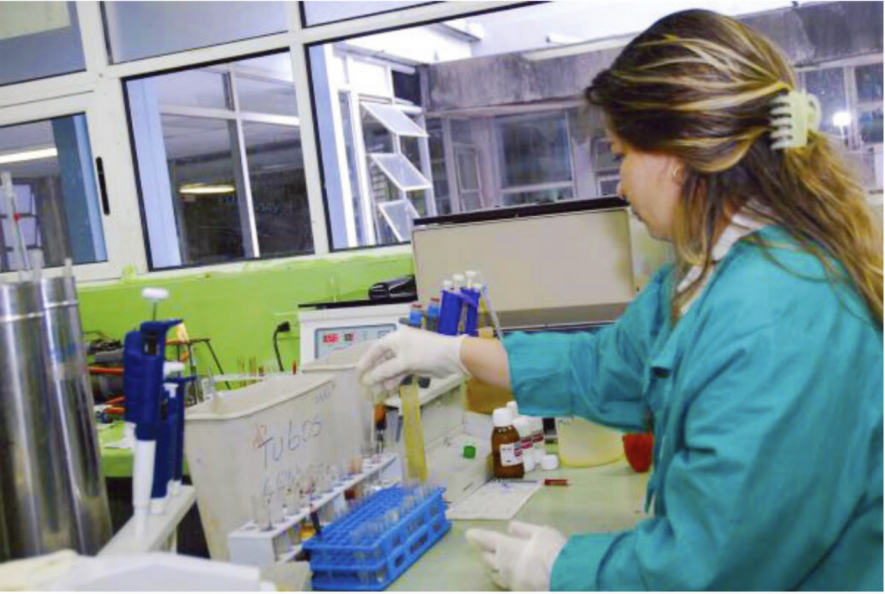
Image Courtesy - UNIDO
The day must come when we have a Party of men and women, and a leadership of men and women, and a State of men and women, and a Government of men and women.
--Fidel Castro (Speech at the Second Congress of the Federation of Cuban Women, 1974)
Forty one years ago, on March 8, 1981, Cuba’s first chemical synthesis plant for production of generic pharmaceutical products was inaugurated in Havana. Honouring the International Women’s Day, the plant was named Empresa Farmacéutica 8 de Marzo. This plant is one among the many state-owned entities of the biopharmaceutical industry in Cuba. The establishment produces beta-lactam antibiotics (Cephalosporin, Penicillin and Carbapenem), the most widely used group of antibiotics, in their different presentations: injectable, capsule and powder for oral suspension.
Empresa Farmacéutica 8 de Marzo was inaugurated by Vilma Espín, a chemical engineer and a leader of the Communist Party. She was a women’s rights activist, who founded the Federation of Cuban Women (FMC) in 1960.
This was a strong statement that Cuba made four decades ago -- indicative of the commitment it had toward economic and political empowerment of women and gender equality. FMC was set up by the State to coordinate efforts for gender equality.
Cuba was among the first signatories of the Convention on the Elimination of All Forms of Discrimination against Women (CEDAW). It signed and ratified the Convention in 1980. Interestingly, the United States has still not ratified CEDAW.
On the Social Institutions and Gender Index (SIGI), developed by Organisation for Economic Cooperation and Development or OECD, Cuba had a score of 0.02 in 2014 (the latest available) which indicates “very low” discrimination against women in social institutions. SIGI takes into account laws, social norms and practices, and captures the underlying drivers of gender inequality.
The UNDP’s Gender Inequality Index (GII) gives Cuba a score of 0.304 which is lower than the world average of (0.436) indicating that Cuba is progressing at par with many developed countries such as the US (0.204). GII is a composite measure reflecting inequality in achievement between women and men in three dimensions: reproductive health, empowerment and the labour market.
Cuba has ensured access to universal and free education for women and also mandates equal pay for equal work. Havana can also be credited with the second parliament in the world with the highest female participation. Nearly 53% of parliamentarians are women. According to the data provided by Cuban official sources, women represent 70% of professional judges and prosecutors in Cuba.
Six Decade-Long Blockade and Sanctions
Cuba has been combating crippling sanctions at the hands of the US for over six decades now. The impressive achievements made by Cuba are despite economic, commercial and financial blockade imposed by the US government.
During Donald Trump's administration, 243 unilateral coercive measures were applied against Cuba. And in January 2021, in the middle of the pandemic, in a politically motivated move, Cuba was added to the List of State Sponsors of Terrorism. This has further increased the difficulties for the country to engage at the international level and made its fight tough against the economic and health implications of the COVID-19 pandemic.
The US “deliberately hindered” import of supplies needed to deal with COVID-19 and this had a negative effect on healthcare, Cuban authorities allege. It prevented procurement of more than 30 products and supplies that are urgently needed for the prevention and treatment protocols of COVID-19.
The sanctions against Cuba have affected the work of several entities of the Cuban biopharmaceutical industry, including the Centre for Genetic Engineering and Biotechnology (CIGB), the Finlay Vaccine Institute (IFV), the AICA Laboratories Company, the FarmaCuba Importing Exporting Company, and the Empresa Farmacéutica 8 de Marzo, all of which are linked to the country's efforts to confront the pandemic.
From April to December 2020, the blockade caused losses worth $200 million to the healthcare sector, $38 million more than reported in the previous period.
While US sanctions directly hindered the import of supplies needed to deal with COVID-19, the international economic blockade prevented timely execution of financial transactions with suppliers of purchased supplies, as well as the execution of donations offered by different organisations to fight the pandemic.
Fidel Castro’s Vision on Improving Health Sector
“Why is the government so concerned with the problem of health? Because it is one of the most urgent of problems and one of utmost importance for the revolution”, announced Cuban leader Fidel Castro on October 18, 1962, at the inaugural ceremony of the Basic Science and Preclinical Institute at Cubanacan.
Cuba’s exemplary health system and biopharmaceutical prowess owes a lot to the vision of Castro, who prioritised education and healthcare. Many elements, such as creation of the family doctor-and-nurse programme since the 1980s, ensuring that every neighbourhood had access to primary healthcare, advances in primary healthcare, public health, medical education and research are part of this vision.
Comparing some of the health indicators in the US and Cuba, the tremendous accomplishments in realising Castro’s vision cannot be missed.
In terms of availability of hospital beds and doctors, Cuba has made far greater progress than the US, which is a much more developed economy in comparison to Cuba (Figure 1). While only 29 hospitals beds are there for a population of 10,000 in the US, Cuba has 53 beds in place. In terms of doctor density, the US has 26 doctors per 10,000 population while Cuba has 84 doctors per 10,000 population.
Similarly, in terms of mortality indicators for infants and children, Cuba has done much better than the US. Mortality ratios are much lower in Cuba than the US (Figure 2). Infant Mortality rate for females is 4.9 per lakh live births in the US and in Cuba this is lower at 3.6 per lakh live births. The number of children who die before attaining 5 years of age is 5.7 per lakh live births among females while Cuba has lesser children dying at 4.6 per lakh live births. Similarly, in the IMR and U5MR for both males and females, Cuba again fares better than the US.
The neonatal mortality rate in the US is 3.4 per 100 live births but in Cuba this is less at 2.4 per 100 live births.
The healthy life expectancy or average number of years that a person can expect to live in "full health" by taking into account years lived in less than full health due to disease and/or injury is also higher in Cuba than in the US. For females this is 69 years in Cuba against 67 years in the US. For males and females combined, this is 68 years in Cuba against 66 years in the US.
In Purchasing Power Parity (PPP) terms, which compares different countries' currencies through a "basket of goods" approach and allows for comparison of productivity and standards of living between countries, with lesser Current Health Expenditure (CHE) per Capita, Cuba has been able to achieve better health outcomes than the US.
The per capita CHE (in PPP) is 2,599 and in the US, it is 10,921. However, Out-of-Pocket Expenditure (OOPS) per Capita in PPP (Int USD), are much lower in Cuba (Int USD 275) than the US (Int USD 1235).
Despite crippling sanctions imposed by the US, Cuba is at par with the US on Universal Health Coverage Index score (SDG indicator 3.8.1), which captures coverage of essential health services. The index gives average of coverage of essential services based on tracer interventions that include reproductive, maternal, new-born and child health, infectious diseases, non-communicable diseases and service capacity and access, among the general and the most disadvantaged population. Cuba has an UHC index measure of 83 while the US has 84.
COVID-19 – Successful Domestic Vaccination and Global Solidarity
During the pandemic, Cuba’s work on the domestic front and also in terms of global solidarity has been exemplary. Using its prowess in biopharmaceutical industry and public health, it has shown an alternative to the Big Pharma by putting people first instead of profits.
Cuba indigenously developed three vaccines which are authorised for emergency use, Soberana 02 and Soberana Plus developed by IFV, and Abdala, developed by CIGB. These vaccines have demonstrated more than 90% efficacy in clinical trials and after regulatory approval for emergency use, became the backbone of Cuban COVID-19 vaccination efforts. A fourth vaccine, Mambisa (CIGB), administered nasally, and a fifth, Soberana 01 (IFV) are still in clinical trials.
The result of this feat is clearly visible. While Cuba has fully vaccinated 87% of its population, the US has been able to fully vaccinate only 65% of its population.
Cuba is also one of the very few countries where children below five years of age have been vaccinated. While the world over, Big Pharma companies are still in the process of developing vaccines for this age group.
Not only has Cuba succeeded in vaccinating most of its population, including children, it has also sent these vaccines to other countries that have approved them. Venezuela, Vietnam, Iran, Nicaragua, Argentina, Mexico and Syria are a few such countries.
Cuba has not just given these countries vaccines for immediate administration but also provided them with technology to produce these vaccines in their regions. It has made an end-to-end technology transfer with some of these counties Vietnam, Venezuela and Iran. An end-to-end technology transfer means that the country that is getting this technology can set up a domestic manufacturing plant and replicate the production of the vaccine from start to finish. This helps build the manufacturing capacity of the receiving country.
During the pandemic, Havana also redesigned and created its own pulmonary ventilators for the hospital care of patients.
All this has been possible as the Cuban government invested heavily in science and technology since the 1980s, under the vision of Fidel Castro. It is currently working on a portfolio of 101 biopharmaceuticals under development, 32% of which are vaccines.
In 2020, as the pandemic spread, Cuba sent teams of doctors to Italian regions of Lombardy and Piedmont and Andorra. In fact, for years Cuba’s Henry Reeve Brigade, with more than 4,900 health professionals, has been providing medical help in various countries and even during the pandemic. Women constitute 64.2% of this medical brigade. The small country continues to inspire people across the globe.
Get the latest reports & analysis with people's perspective on Protests, movements & deep analytical videos, discussions of the current affairs in your Telegram app. Subscribe to NewsClick's Telegram channel & get Real-Time updates on stories, as they get published on our website.









